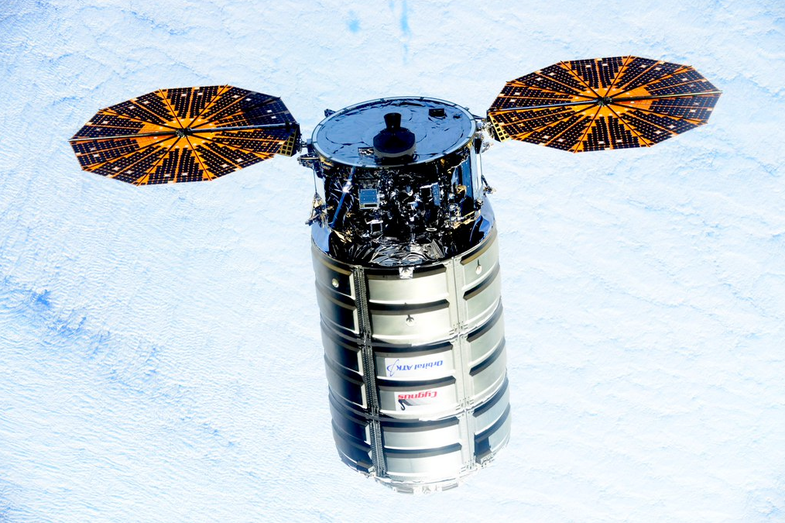Watch NASA’s Fire Experiment Launch To The Space Station Tonight
Tune in for takeoff at 11:05PM Eastern

A giant barrelful of goodies is scheduled to launch to the International Space Station tonight. In the belly of Orbital ATK’s Cygnus spacecraft, 7,900 pounds of food, clothing, spare parts, and science experiments will make its way to the ISS. Cygnus and its cargo will ride into orbit on an Atlas V rocket.
So far, the weather is holding and it looks like there’s a good chance that the spacecraft will take off on schedule–but rockets can be very touchy, so you never know.
The launch window opens at 11:05PM, but livestream coverage, above, starts around 10PM.
Cygnus will rendezvous with the ISS at around 6AM on March 26. After the fresh supplies are unloaded (and the astronauts’ space waste gets put onboard), the spacecraft will depart from the space station. But its mission won’t be over yet.
Before it burns up in the atmosphere, Cygnus will launch five LEMUR-2 CubeSats–mini satellites that will track ship movements as well as take atmospheric measurements. The CubeSat deployment will be a first for the spacecraft.

Cygnus
Then, Cygnus will host the largest fire experiment attempted in a spacecraft. A box inside the spacecraft will contain a fire that’s about a meter long, shedding some light on what to expect if a spacecraft in microgravity were to accidentally catch fire. Let’s hope that never happens, though.
Finally, even as Cygnus burns up from the friction of entering Earth’s atmosphere, it will still be collecting data. The Reentry Breakup Recorder ” will measure and record the dynamics of Cygnus’ breakup” during reentry, according to an Orbital ATK press release.
“This is a NASA test with the goal of understand the effects on re-entering vehicle of the actual re-entry and breakup,” Frank DeMauro, Orbital ATK’s VP of Advance Programs for Space Systems Group, told Popular Science in an email. “It will help validate and improve the spacecraft breakup models we use in our design process that help us make sure the vehicles do breakup upon re-entry.”
That fiery re-entry won’t occur for a while yet. But in the meantime, there should be plenty of flames shooting out the backside of the Atlas V rocket this evening. Tune in to the livestream above for the launch at11:05PM!